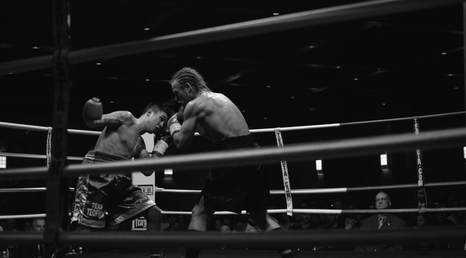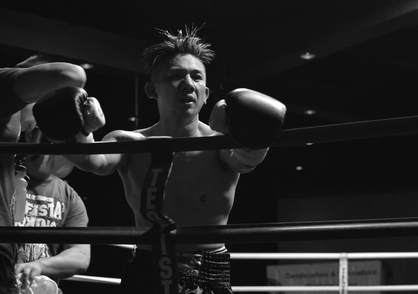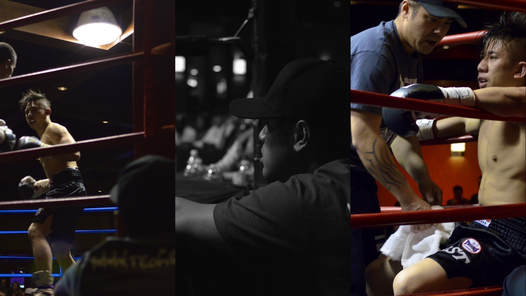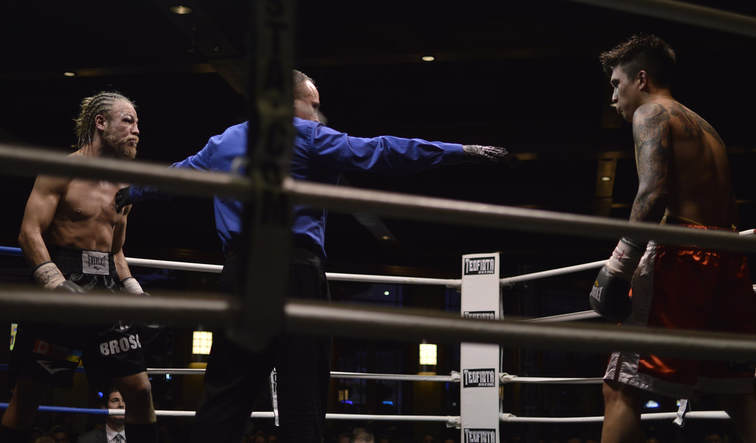If you're here, you've shared with us your biggest challenge.
To complete the exercise: Read the article here >> then consider the question at the end. That's it!
Timeless Performance: 4 Knock-out Lessons You Can Take From Boxing and Use Today to Stay on Your Feet!
12/12/2017
A great fighter can take a punch (or hundreds), and choose to keep going. If you are in business today, you’ve likely had to take more than a few big hits lately. If you find yourself reeling - consider what it takes for a champion to stay on his feet and come back for more.
George Foreman said, “Boxing is like jazz. The better it is, the less people appreciate it.”
The Sweet Science represents the importance of a winning process, staying engaged, being resilient, and finding support for success.
A great fighter can take a punch (or hundreds), and choose to keep going. If you are in business today, you’ve likely had to take more than a few big hits lately. If you find yourself reeling - consider what it takes for a champion to stay on his feet and come back for more.
George Foreman said, “Boxing is like jazz. The better it is, the less people appreciate it.”
The Sweet Science represents the importance of a winning process, staying engaged, being resilient, and finding support for success.

1: Physical and Mental Readiness is a result of a Conditioning Process
Top boxers are conditioned to perform at the very limit of their potential. Their readiness is the result of an efficient and effective process that has stood the test of time.
For hundreds of years, fighters devoted to this “most difficult sport” have paid in blood and teeth to prove which equipment and methods truly aid performance. While fads have come and gone, the ubiquitous punching bags, skip ropes, and medicine balls can be found in any boxing gym today, and they are still there because they work.
So the process is sound. What about the mindset of the boxer? If a boxer is going to reach the limit of their potential they must be fully committed to the process. Floyd Mayweather, Jr. said it simply, “I always put my boxing first.” As the fight approaches, there is no room for excess, caprice, self-doubt, or pretense - these must all fall away.
Top boxers are conditioned to perform at the very limit of their potential. Their readiness is the result of an efficient and effective process that has stood the test of time.
For hundreds of years, fighters devoted to this “most difficult sport” have paid in blood and teeth to prove which equipment and methods truly aid performance. While fads have come and gone, the ubiquitous punching bags, skip ropes, and medicine balls can be found in any boxing gym today, and they are still there because they work.
So the process is sound. What about the mindset of the boxer? If a boxer is going to reach the limit of their potential they must be fully committed to the process. Floyd Mayweather, Jr. said it simply, “I always put my boxing first.” As the fight approaches, there is no room for excess, caprice, self-doubt, or pretense - these must all fall away.
2: Pain and failure is part of the process.
You need the bad to get to good. Your fortitude will and must be tested and these are opportunities you can't squander; when an opponents punch connects its one more chance to develop the ability to be hit in the face, find your centre and fight on. The first time any prospective boxer gets hit their instincts are telling them to run, freeze, cover-up or flail wildly. If they are going to box, they must learn to accept the hit as a reality of their situation and stick to the plan.
Amateurs quit. Professionals continue despite external forces pushing them around. If you are a professional you've learned to dig deep when everything is hitting the fan, and to regain control. We must see challenge as a necessary part of the process of winning. Get hit, find your feet, slip the next punch, jab and close the distance.
Taking a punch” means staying relaxed and being resilient.
Acceptance of adverse situations is not a passive exercise if you are truly committed to your success.
Taking a hit is part of a broader commitment to success. It is the realization that “Plan A” will likely fail in some way, and that you must react and respond, growing from the failure but never giving up. Accepting the mistakes helps us zero in on success, we win big by losing small.
You need the bad to get to good. Your fortitude will and must be tested and these are opportunities you can't squander; when an opponents punch connects its one more chance to develop the ability to be hit in the face, find your centre and fight on. The first time any prospective boxer gets hit their instincts are telling them to run, freeze, cover-up or flail wildly. If they are going to box, they must learn to accept the hit as a reality of their situation and stick to the plan.
Amateurs quit. Professionals continue despite external forces pushing them around. If you are a professional you've learned to dig deep when everything is hitting the fan, and to regain control. We must see challenge as a necessary part of the process of winning. Get hit, find your feet, slip the next punch, jab and close the distance.
Taking a punch” means staying relaxed and being resilient.
Acceptance of adverse situations is not a passive exercise if you are truly committed to your success.
Taking a hit is part of a broader commitment to success. It is the realization that “Plan A” will likely fail in some way, and that you must react and respond, growing from the failure but never giving up. Accepting the mistakes helps us zero in on success, we win big by losing small.

3: Performance is a product of character
Take risks, be fully accountable, and choose to remain in control.
According to Manny Pacquiao, “Boxing is not about your feelings. It's about performance,” and the ability to perform in the face of adversity is all about character.
In the middle of the fight, as condition, commitment and character are pushed to the limit, there is one more defining factor of the boxing culture: The Corner.
Being prepared to take hits yet stay loose;
choosing to be in the line of fire;
refusing to succumb to panic or be a victim;
these are the characteristics of a winner.
Take risks, be fully accountable, and choose to remain in control.
According to Manny Pacquiao, “Boxing is not about your feelings. It's about performance,” and the ability to perform in the face of adversity is all about character.
In the middle of the fight, as condition, commitment and character are pushed to the limit, there is one more defining factor of the boxing culture: The Corner.
Being prepared to take hits yet stay loose;
choosing to be in the line of fire;
refusing to succumb to panic or be a victim;
these are the characteristics of a winner.
4: A boxer never enters the ring alone
A professional boxer surrounds themselves with expertise and support. Between each round, a fighter’s corner is a one-minute sanctuary that contains the strategic, physical, mental and spiritual support the boxer needs.
A professional boxer surrounds themselves with expertise and support. Between each round, a fighter’s corner is a one-minute sanctuary that contains the strategic, physical, mental and spiritual support the boxer needs.

A Cut Man: As one boxer put it to me, “He stops the life leaking out of my face.” He is an expert at staunching the flow of blood and reducing swelling so a fighter can see to perform. A cut man limits damage and makes short-term repairs that enables a boxer to exert his will beyond the limits of his body.
The Manager: While not always in the corner during a single fight, the Manager helps the boxer capitalize on the finite number of years they have to become a contender. The Manager ensure the boxer’s career reflects the arc of his or her potential. While the boxer is focused on winning the battle, they focus on the war.
The Trainer: The trainer knows the fighter’s physical and mental limits (sometimes better than the fighter knows themselves). They know the boxer's style, strengths, and weapons they can unleash; but they also understand their weaknesses, bad habits and doubts. The Trainer works with the boxer to capitalize on his or her strengths and minimize any weakness.
The Corner Man: It’s not always easy to maintain your focus - especially when being punched repeatedly in the face. During a fight it’s the corner man’s voice that rings loudest in the boxer’s ears. The corner man watches the fight from the outside– he observes every nuance of the boxer’s performance. He helps the boxer see a way through the his opponent's tactics.
Between rounds, a corner man holds the boxer true to the game plan, when adrenaline, trauma, exhaustion or fear has sapped the boxer of his focus. He is the priest that must deliver the chastising sermon when the boxer shows sloth or vanity, and it is he who hears a confession of self-doubt and provides absolution before the next round.
Find people who believe in you
Every high performer needs a corner. Who you put in your corner will determine your resilience, development, and how you set and achieve your goals. Above all, these people must believe, even when you have doubts.
It’s easy to discount boxing as a brutish sport. It’s easy to assume that we have little to learn from those that liquidate their body for money. But look beyond the spectacle and you’ll find the fundamental culture of the boxer – the boxing way of life. It has elevated countless numbers to success, many more than just those who have been declared champions.
Business is tough, especially when you're trying to rise to the top of your game. Have you taken a few good hits lately? Consider your conditioning, commitment, character and corner - then find your feet, slip the next punch and jab.
Best,
Tim
To Complete This Exercise: Choose these two statement is most true for you:
|
You have the support you deserve in your corner. You have people in your life dedicated to your resilience and helping you reach your full potential. You have momentum and are exactly where you want to be right now! |
Your corner feels a bit empty. Critical areas of your career and life are unsupported. It is not easy to sustain your top performance. Failure is painful and recovering takes more time then you'd like. Today, you are unsure of how you will reach your goals. |
All photos courtesy of Tyler Klinkhammer and ©Tyler Klinkhammer, 2015
Featured:
Steve “The Dragon” Claggett vs. “The Mighty” Tebor Brosch
“Roxie “The Ram” Lam vs. "The Newfie Bullet” Wayne Smith
Coach: Eric DeGuzman of Teofista Boxing, Calgary, Canada.
Referee: Len Koivisto, Calgary Combative Sports Commission


